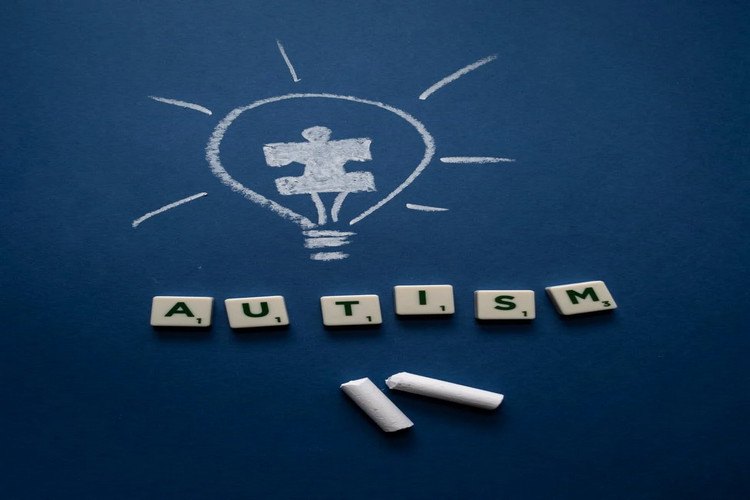 Autism is a neurological as well as a developmental disorder, hence the symptoms occur early on in childhood, normally appearing in the first three years of life, and last for a lifetime. It is now referred to as Autism Spectrum Disorder (ASD) as patients who suffer from it manifest a range of symptoms. Such patients will often differ in their mannerisms in learning, communicating, and interacting with others.
Autism is a neurological as well as a developmental disorder, hence the symptoms occur early on in childhood, normally appearing in the first three years of life, and last for a lifetime. It is now referred to as Autism Spectrum Disorder (ASD) as patients who suffer from it manifest a range of symptoms. Such patients will often differ in their mannerisms in learning, communicating, and interacting with others.
The exact cause of ASD is unknown, however there is a theory which states it is a genetic condition. Another theory postulates that it may be associated with autoimmune disease. In either case, neurophysiological and neural hypo-perfusion abnormalities are a constant. There are certain environmental factors, diet and lifestyle factors that may aggravate or ameliorate the condition. Since there is such a wide range of symptoms, it is either very easily overlooked or over-diagnosed.
Some symptoms to look out for in the early years of development:
- Not responding to name by 12 months of age
- Unable to socialize
- Delayed speech and language skills
- Repetition of words and phrases
- Gives unrelated answers to questions
- Gets upset with minor changes in routine
- Flaps hands or spins in circles
Symptoms associated with social skills may be:
- Avoids eye contact
- Prefers to play alone
- Expressionless face
- Does not share interests with others
- Does not understand personal space and boundaries
- Difficult to console during stress
- Has trouble understanding other people’s feelings and communicating own feelings
Treatment of Autism with Stem Cell Therapy
Recent studies suggest that ASD may be associated with autoimmune disorders. ASD originates from dysfunctional neurons, a decreased blood supply to the affected area of the brain and auto-immune process. Stem cell therapy for autism offers hope by addressing these issues through immune modulation and stimulating the regeneration of functional neurons. Therefore, stem cell has been used for a variety of autoimmune conditions, such as Scleroderma or Lupus as well as with Multiple Sclerosis that have the combination of neurological and immune components. Patients treated at ProgenCell have shown beneficial results related to behavior and communication skills.
Stem cell source
The use of autologous stem cells of bone marrow as a source of hematopoietic and mesenchymal stem cells has been supported through the evidence collected from research and clinical trials of Autism, highlighting the growing interest in stem cell therapy for autism as a potential treatment option. These stem cells possess the ability to differentiate into cells of ectodermal origin, such as neurocytes and they also consist of immune-modulatory characteristics, i.e. they can regulate the micro-environment in the host tissue. Also, if the patient had stored stem cells from the umbilical cord blood when he was born, then it could be a viable source of stem cells for this type of condition.
Adult patients a second option of stem cells therapy is with another good source of stem cells is the adipose tissue. However, when considering stem cell therapy for autism, it’s important to note that most patients with autism are children. For this reason, we do not recommend performing a mini-liposuction in children. It is very aggressive, the fat layer is thin and risks are higher, therefore adipose tissue is not a preferred choice of stem cell source.
Patient Preparation
Since most of the cases of Autism are children, and they are easily scared by needles, a light sedation is recommended. Patient is asked to be early morning at the procedure room before
any meal. Fasting will enable better tolerance to light anesthesia. After the patient is sedated, an IV will be set and then the procedure of bone marrow aspiration begins. Patient wakes up a few minutes after the procedure is finished.
How Stem Cells Are Administered
The best results have been obtained when stem cell therapy for autism is administered by two different routes: one part of the specimen is infused by IV into the bloodstream to regulate the immunological effects and then a concentrated part of it infused by Intrathecal route to get into the spinal fluid to flow up to the brain and neurons, without the need to cross the brain barrier.

Risks and side effects
Side effects of an IV are minimal, very few patients develop a small bruise on the area of the needle.
Side effects of an Intrathecal injection: redness of the area, limited hemorrhage, soreness for a few hours, some patient refer headaches.
Besides the side effects of an IV and the intrathecal injection, there are also side effects that occur not too often, but when they are present they are considered expected to happen due to the light general anesthesia or Sedation:
- After the procedure, the patient can experience somnolence, nausea and dizziness.
- Patient will be tired and could sleep for a couple hours after the procedure.
Scientific evidence of stem cell treatment for autism
Stem cells have the capacity to restore and differentiate to other types of cells, these can be found in the bone marrow. Research has shown that stem cell therapy for autism can promote neuroprotection, neurogenesis, and synaptogenesis, all of which improve the nervous system. Which leads to an improved nervous system in patients that receive stem cell therapy.
Autism cases have increased proportionally to the cases found in an epidemic, although, there is no known pharmaceutical therapy that’s effective to improve the patient’s quality of life nor provides any clinical improvement. That’s why new treatments options have been developed for autism. Mesenchymal stem cells have immunomodulation properties, which is why the use of these cells in diseases associated with inflammation or damaged tissue, such as stem cell therapy for autism, is very relevant.
Also, stem cells promote the activation of paracrine mechanisms in the body, allowing them to regenerate through cellular differentiation. Due to autism having and immunological and inflammatory background, stem cells represent a crucial improvement to the patient’s quality of life. (2)
Currently, there are multiple documents that mention the benefits of stem cells in the immunological system of the patients. It’s been shared that cells help in the two types of immune systems, the adaptive system and innate system. Which means the following: it allows the suppression of the inflammatory activities, suppresses the maturation of dendritic cells, promotes the generation of T regulatory cells through IL-10, suppression of the proliferation and toxicity of NK Cells or better known as Natural Killers. Everything mentioned above makes a references to the participation of stem cells in the immune system, leading to a better functionality and regulation on this system.
Stem Cell therapy has achieved major progress. A research was done in which they used autologous stem cells from the bone marrow and applied them via intrathecal to 32 patients with autism. Most of the patients showed an improvement after a medical assessment. 26 months after the stem cell therapy was done, the patients showed positive social interaction, improvement in emotional response, communication, speck, and behavior. (1)
Another scientific study was done with 30 patients, 25 boys and 5 girls with autism diagnosis. Prior to the application of autologous bone marrow stem cells, studies where done in a scale that evaluated the behavior of children with autism which is Childhood Autism Rating Scale (CARS), all patients where scaled in a severe state. Complementary studies where done such as a PET SCAN and CT SCAN which showed hypo metabolism in 7 regions of the brain, meaning that there is a decreased function in those areas.
After the stem cell application was done, they repeated the imaging, 29 patients showed an improvement in the metabolism of the brain regions that were severely damaged.18 months after the treatment, the severity of autism diminished since another CARS evaluation was done to each patient. They showed improvement in different aspects such as social interaction, visual contact, they became more expressive, they improved their sleep. Also, after the stem cell treatment they were able to improve their communication, their ability in the daily basis to socialize and with motor skills. (3)
The benefits found in patients that received stem cell therapy varies. Each patient is unique, that’s why at ProgenCell we focus on each individual case, to know them in every aspect possible and provide a full medical assessment to determine the suitability of stem cell for autism treatments. Based on our experience, the use of bone marrow stem cells allows the autistic patient to improve in many aspects of their life.

FAQ’s
What type of stem cells are used to treat autism?
All types of stem cells are harvested from the bone marrow, mesenchymal stem cells, hematopoietic stem cells, somatic stem cells and very small embryonic-like stem cells. This is why stem cell therapy for autism often begins with stem cells from bone marrow, as they are initially recommended after a medical consultation. Allogenic stem cells may be a good option but are not recommended in all cases due to host-donor cell rejection or reaction. In some selected cases, umbilical cord stem cells could be used.
Is there a possibility of stem cell rejection?
Autologous stem cells have no risk of rejection since they are cells from the same patient. When they’re introduced intravenously to the body, they’re recognized as the same patients’ cells and are not attack due to not being considered a harmful external cell by the immunological system.
Some patients using allogenic stem cells could develop a host-donor rejection. The immunological system doesn’t identify them as its own stem cells in the body. They are identified instead as harmful cells that could damage the body. In that way, the system starts a process to destroy the stem cells, hurting and producing more harm to the body.
How many stem cells are used in stem cell therapy for autism?
Autologous stem cells vary from patient to patient, there is no specific target amount of number of cells to be used, we focus on obtaining enough bone marrow volume which contains high quality stem cells.
Cases where bone marrow is not being used, other sources of stem cells could be an option. Patient goes thru a medical review to determine clinical status, results of a recent blood work and other factors such as availability are considered. Number of stem cells vary from patient to patient.
Why are multiple treatments necessary?
Autism is a chronic disease that progresses through time. Multiple treatments are needed in order to help the body restore and regenerate with this therapy.
How can I know if my child is a candidate?
We recommend to have a medical evaluation to review if the patient is a candidate for a stem cell therapy procedure. Schedule an evaluation today by calling +1 888 443 62 35 or contacting info@progencell.com
References:
Liu Q, Chen MX, Sun L, Wallis CU, Zhou JS, Ao LJ, Li Q, Sham PC. Rational use of mesenchymal stem cells in the treatment of autism spectrum disorders, World J Stem Cells 2019; 11(2): 55-72
Ichim T, Solano F, Glenn E, Morales F, Smith l, Zabrecky G, Riordan N. Stem Cell Therapy for Autism, Journal of Translational Medicine 2007, 5:30
Nguyen L, Nguyen H, et al. Outcomes of bone marrow mononuclear cell transplantation combined with interventional education for autism spectrum disorder, Stem Cells Translational Medicine 2021;10:14-26.
Signs and Symptoms of ASD. (n.d.). Retrieved from Centers for Disease Control
and Prevention: https://www.cdc.gov/ncbddd/autism/signs.html
Is Stem Cell Therapy Right for You?
Start your online process for FREE Now!
Learn if Stem Cell Therapy can help you improve your quality of life.
Is Stem Cell Therapy Right for You?
Start your online process for FREE Now!
Learn if Stem Cell Therapy can help you improve your quality of life.
Our Blog

